How to Write a Podcast Script: The Complete Guide with Templates
A great podcast script is your secret weapon. It's the roadmap that transforms your ideas into a structured, engaging story, ensuring every moment captivates your audience. Far from just words on a page, a script—whether a detailed manuscript or a simple outline—banishes recording anxiety and streamlines editing, letting you focus on delivering a powerful, professional show.
This guide will show you how to write one. We'll walk you through choosing your script style, breaking down each essential component, and provide a step-by-step process, handy templates, and pro tips to turn your creativity into a compelling audio blueprint.
What is a Podcast Script and Why Do You Need One?
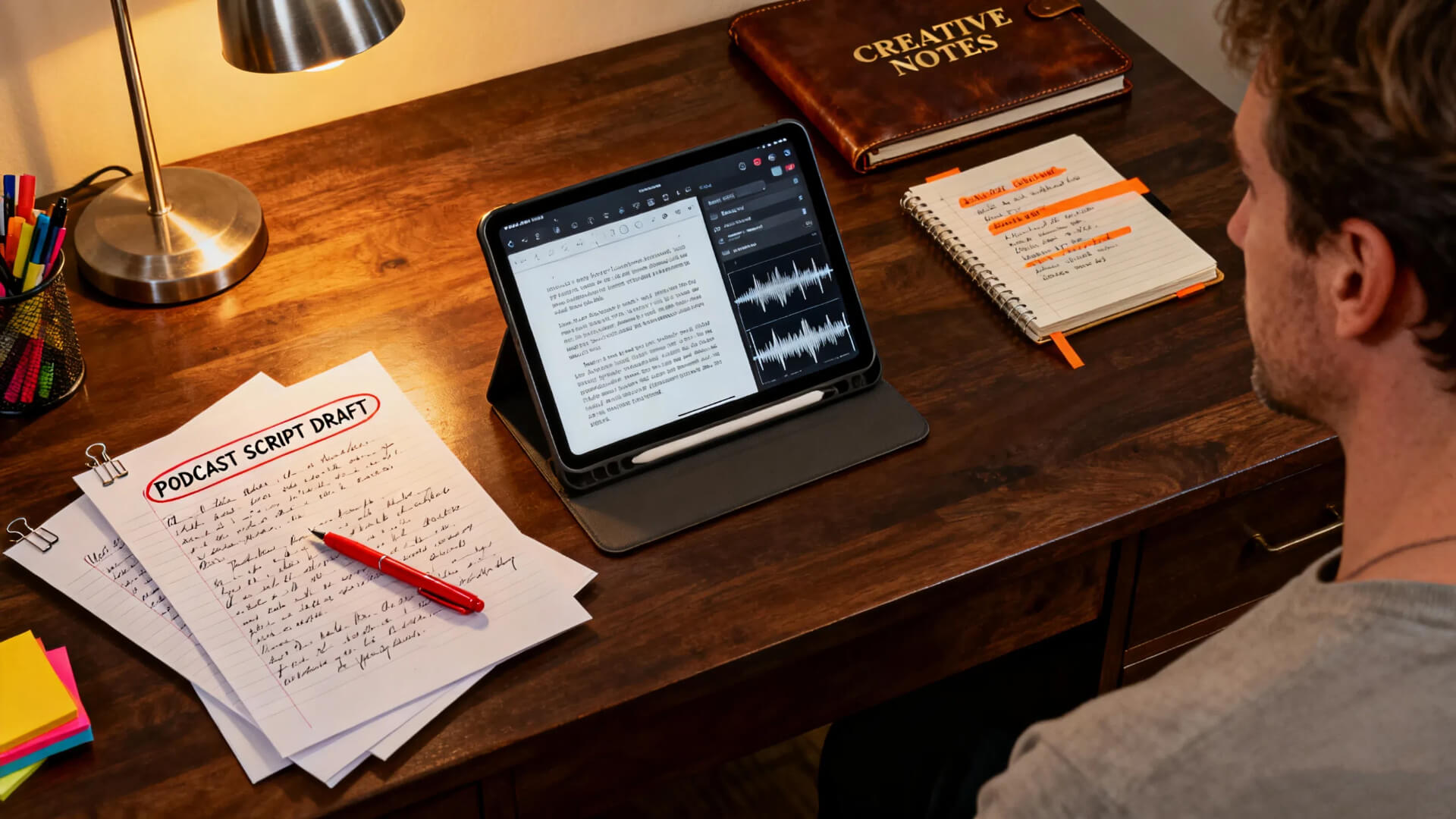
A podcast script is your episode's blueprint. It details everything from spoken words to audio cues like music and sound effects. Its core purpose is threefold:
- Builds solid structure so you stay on track
- Guarantees high-quality content every episode
- Reduces recording anxiety for confident delivery
According to Edison Research, 18-34 year-olds spend 32% of their daily audio time with podcasts. The intimate nature of headphone listening creates unique "para-social relationships" that your script can leverage through conversational language and direct address.
Why should you use a podcast script? Because scripting is a superpower. Here's what it does for you:
- Keeps you on track: No more rambling off on tangents
- Boosts your content quality: Organized, well-researched points are sharper and smarter
- Slays the anxiety dragon: Knowing what you're going to say cures "mic fright"
- Makes editing a breeze: Less "um," less dead air, and way less time editing
- Creates a consistent vibe: Every episode feels part of the same awesome show
- Makes teamwork easy: Sharing a script with your team or a guest makes collaboration seamless
Which Podcast Scripting Style is Right for You?
One size doesn't fit all. Pick the style that matches your show's vibe and your comfort level.
What is a Full Word-for-Word Script?
You write down every single word you're going to say.
-
Best for: Solo shows, highly technical or sensitive topics, scripted fiction, and beginners who need that extra security
-
Pros: You're in total control. Fewer mistakes, and editing is super simple
-
Cons: It can sound a bit stiff and robotic if you don't deliver it well
-
Example:
[UPBEAT INTRO MUSIC FADES IN, THEN UNDER HOST]
Host: "Hello and welcome to 'The Digital Deep Dive,' the show that makes tech simple. I'm your host, Alex. Today, we're tackling a question I get all the time: What exactly is the blockchain? In the next 20 minutes, we'll break it down, not with confusing jargon, but with a simple story about a digital ledger that's changing the world. Stay with us."
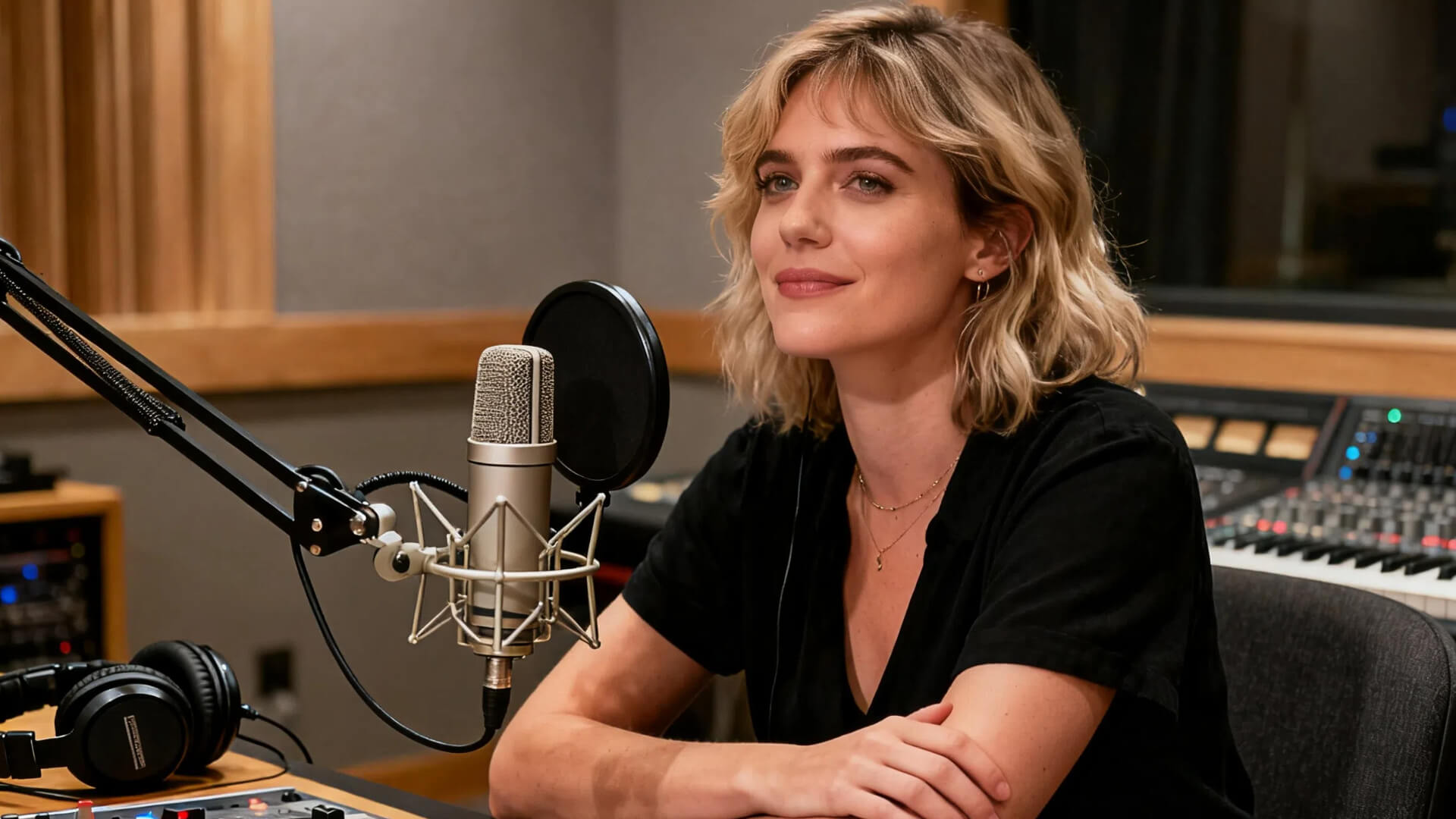
When Should You Use a Detailed Outline Script?
This is the sweet spot for many hosts. It's a structured list of your key points, questions, and data.
-
Best for: Interviews, co-hosted shows, and conversational formats
-
Pros: It keeps the chat feeling natural and spontaneous, but still guides the conversation so you hit all your important points
-
Structure: Key talking points, questions, data, and quotes
-
Example:
Segment 1: Introduction to Guest
- Welcome guest, Sarah.
- Quick bio: "Award-winning sustainable chef."
Segment 2: The "Aha!" Moment - Question: "Sarah, what was the moment you knew you wanted to focus on sustainable cooking?"
- Follow-up: "Tell us about the first farm you partnered with."

Is a Bullet-Point Script Suitable for Your Podcast?
This is just a quick list of reminders. It's for the podcasting pros who are comfortable winging it.
-
Best for: Experienced hosts, informal discussions
-
Pros: Maximum flexibility and authenticity. It's just you and your thoughts
-
Cons: High risk of rambling, forgetting key info, or running way over time
-
Example:
- Intro: New study on sleep
- Main point: Blue light myth?
- Story: My terrible sleep last week
- CTA: Download the sleep guide
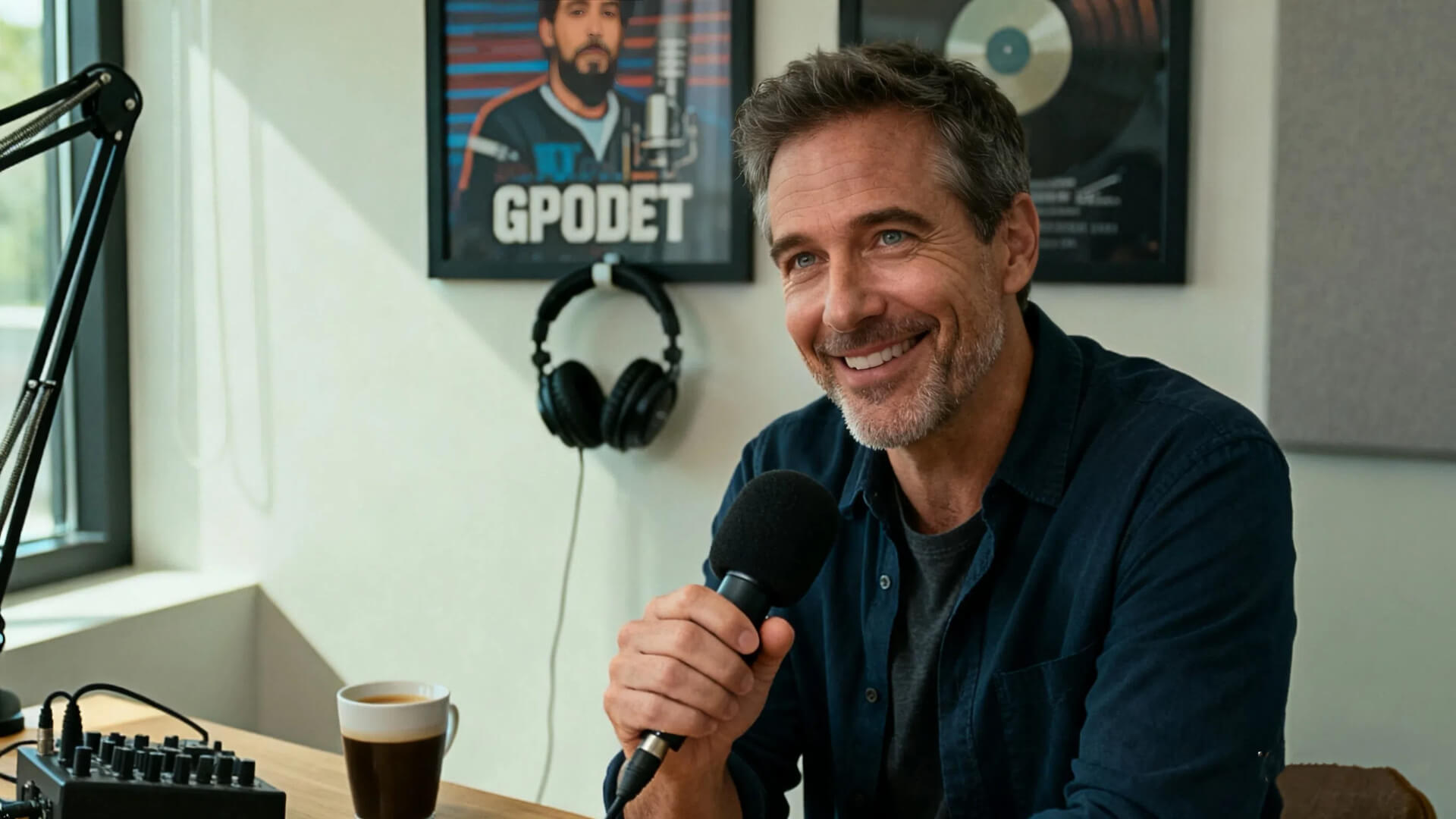
What Are the Essential Components of a Podcast Script?
Every great script is built from the same key parts. Let's break them down.
The Introduction (The Hook)
This is your first impression. Make it count! Include:
- Podcast name and host name(s)
- Episode title and number
- A compelling tagline or a quick reminder of your show's premise
- A teaser of the awesome value in this episode
- Guest name and bio (if you have one)
Critical Tip: The first 60 seconds are critical for listener retention. Hook them fast!
The Main Body and Content Segments
This is the meat of your episode.
- Structure it around key topics, stories, or interview questions
- Support your points with data, fun anecdotes, powerful quotes, or short audio clips
- Organize it all in a logical flow, like Problem -> Solution -> Examples
Transitions and Segues
Don't just jump from topic to topic. Use smooth transitions.
- Phrases like: "Now that we've covered X, let's dive into Y"
- Audio cues like a short musical stinger
- Natural bridges that maintain listener engagement
Calls-to-Action (CTAs)
Tell your listeners what to do next! Be clear and specific.
- Place them mid-roll (in the middle) and in the outro for the best results
- Examples: "Subscribe to the show," "Leave us a review," "Visit our website for the full transcript"
- Be specific: "Subscribe on Apple Podcasts" works better than vague directions
Sponsor Messages and Ad Reads
Gotta pay the bills! Integrate these naturally.
- Include a personal "why I love them," their value proposition, and a clear CTA
- Make it sound authentic rather than scripted
- Keep it relevant to your audience's interests
The Outro (The Wrap-Up)
End on a high note.
- A quick recap of the key takeaways
- Thank your listeners, guests, and team
- Your final CTA
- A teaser for what's coming next episode
- Production credits (who made the music, etc.)
How Do You Write an Effective Podcast Script?
Feeling overwhelmed? Don't be. Just follow these six steps.
1. Define Your Goals and Audience
Before you write a word, ask: What is this episode's one main purpose? Who exactly am I talking to? Understanding your target listener's needs, challenges, and interests will shape your content and tone dramatically.
2. Research and Brainstorm
Go deep! Gather all your info, data, and potential questions for guests. Look for surprising statistics, compelling stories, and relevant examples that will make your content more engaging and authoritative.
3. Create an Outline
Build the skeleton. Put your main points in a logical order. A classic structure is the Three-Act Structure: Setup (introduce the problem), Confrontation (explore the issue), Resolution (provide solutions).
4. Write the First Draft
Now, put some meat on those bones! Flesh out the outline into your chosen script style (full, outline, or bullets). Don't worry about perfection at this stage—just get your ideas down on paper.
5. Annotate and Mark-Up
This is the pro move!
- Add delivery notes like
[Pause for effect]or[Emphasize this word] - Mark cues for music and sound effects (
[SFX: phone ring]) - Note tricky pronunciations (
[Pronounced: Shi-nwah]) - Include timing estimates for each segment
6. Rehearse and Refine
Read it out loud! This is non-negotiable. You'll instantly hear what sounds weird and can adjust to make it conversational and the right length. Time your reading to ensure it fits your target episode duration.
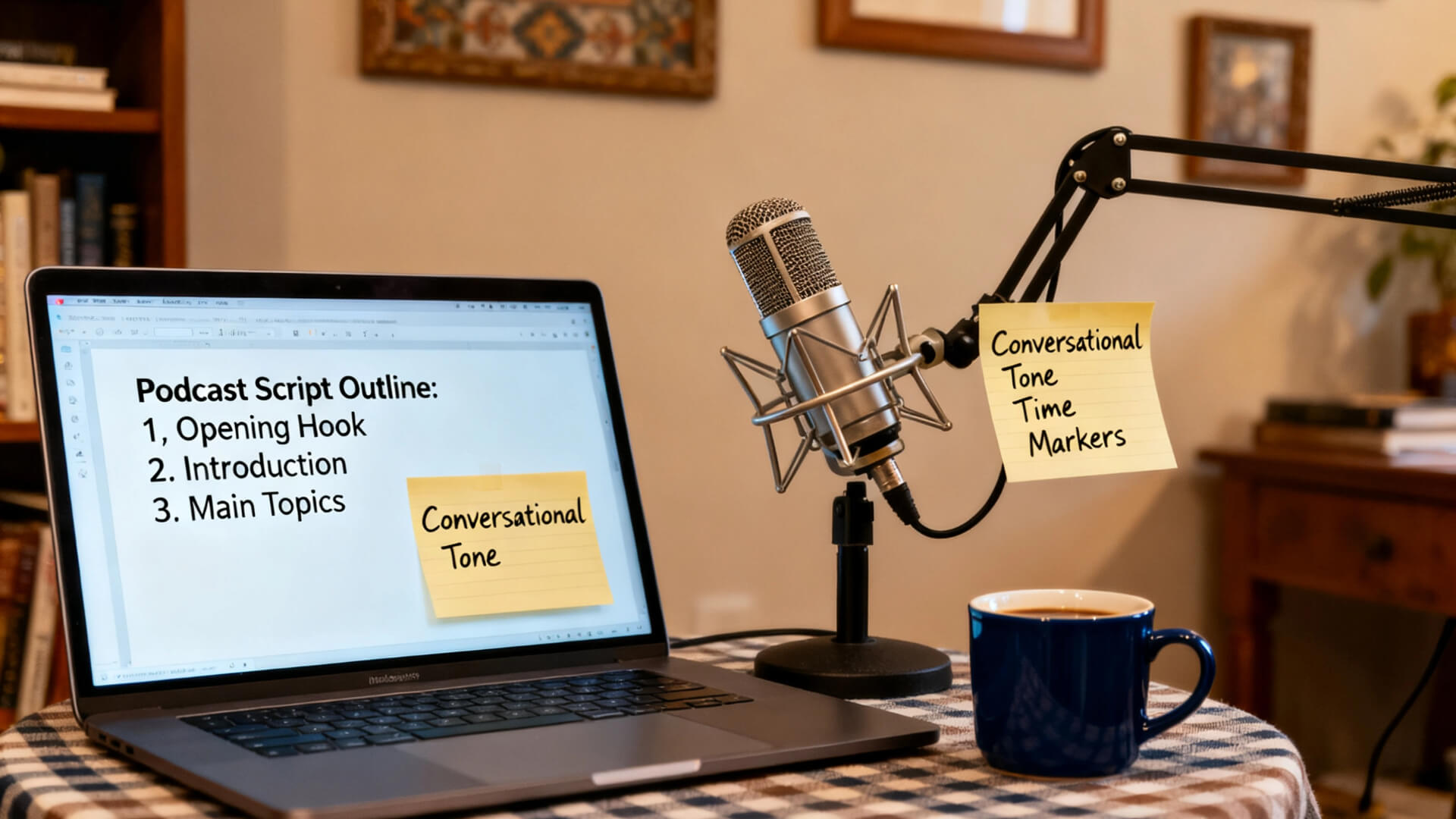
What Are the Advanced Scripting Techniques?
Ready to level up? Here are some pro tips.
Write for the Ear, Not the Eye
Use contractions (I'm, you're), slang, and short sentences. If you wouldn't say it in a coffee shop, don't put it in your script. Read everything aloud during the editing process to catch awkward phrasing.
Master Pacing and Time Management
Assign a rough time to each segment (e.g., Intro: 2 min, Topic 1: 8 min). This helps you hit your target runtime. Include buffer time for spontaneous moments or unexpected discussions.
Plan for Audio Elements
Note exactly where your intro music, outros, and sound effects will go. Visual cues in your script make production smoother and help you create a more polished final product.
Be Authentic and Let Your Personality Shine
Even a word-for-word script should sound like you. Include personal anecdotes, humor, and conversational asides that reflect your unique voice and perspective.
Use Technology to Your Advantage
For solo scripts, teleprompter apps are a game-changer. They help you maintain a natural flow and even "eye contact" with your mic. Tools like AIPodify can also help generate ideas and streamline your scripting process.
Ready-to-Use Podcast Script Templates
Stop starting from a blank page. Here are three templates to adapt for your show.
Solo Show Script Template
[Intro Music Fades In and Out]
Host: "Welcome to [Podcast Name], I'm [Host Name]. Today, we're solving [Big Problem]." (Teaser)
CTA: "Quick before we start, make sure you're following us on [Social Media]."
Topic 1: State Main Point. Share Supporting Data. Tell a relatable Anecdote.
Segue: "So that's [Topic 1], but what about [Topic 2]?"
Topic 2: State Main Point. Share Supporting Data.
Mid-roll Sponsor Message: "A quick word from our sponsor..."
Topic 3: [Continue structure as needed]
Outro: "So to recap [Key Takeaway 1, 2]. Thanks for listening! Our final CTA is [e.g., visit our website]. Next week, we'll be talking about [Next Episode Teaser]!"
[Outro Music Fades In]
Co-Hosted Show Script Template
[Intro Music]
Host 1: Casual banter opening.
Host 2: Response and transition to show intro.
Both: "You're listening to [Show Name] with us, [Host 1] and [Host 2]."
Sponsor Message: Integrated ad read.
Topic 1: Host 1 presents the topic -> Open discussion between both hosts.
Segue: Host 2: "That reminds me of our next topic..."
Topic 2: Host 2 presents the topic -> Open discussion.
Outro & CTA: Wrap up the conversation. Deliver a shared CTA.
[Outro Music]
Interview Show Script Template
[Intro Music]
Host: "Welcome to [Show Name]. I'm your host, [Name]."
Guest Intro: "My guest today is [Guest Name], who is [impressive bio]."
Interview: List of pre-planned questions (with space for spontaneous follow-ups).
Mid-roll CTA/Sponsor Message: "Let's pause our conversation for a message from..."
Continued Questions: More planned questions.
Outro: "Thank you so much, [Guest Name], for being here. Everyone, you can find them at [Guest's Website/Project]. And for you listening, our CTA is [Listener Action]."
[Outro Music]
How Can AI Tools Enhance Your Scriptwriting?
The modern podcaster thinks about more than just the script. According to the McKinsey State of AI 2025 Report, over 70% of media teams now use generative AI for scriptwriting.
AI Applications:
- Brainstorm episode topics and angles
- Generate interview questions
- Draft intro/outro variations
- Create first drafts from outlines
- Suggest structural improvements
Tools like AIPodify can help streamline your scripting process, though human creativity and judgment remain essential for producing truly engaging content.

Frequently Asked Questions About Podcast Scripting
How long should a podcast script be?
It's all about your target episode length and speaking pace. A common industry standard is 150-160 words per minute (wpm), but for the best listener experience, aim for a slightly slower pace. For a 20-minute episode, a script around 2,800 words is a good ballpark. The best method? Time yourself. Read a test segment and calculate your personal wpm.
Should I say "subscribe wherever you get your podcasts"?
It's a bit outdated and vague. The modern best practice is to be specific and direct. A much stronger CTA is: "Subscribe on Apple Podcasts" or "Follow us on Spotify." Guide them to one primary platform to avoid choice overload.
How do I sound natural when reading a script?
Write like you talk, using contractions and short sentences. Use a teleprompter app and set it to scroll slightly faster than you can comfortably read—this forces you to understand phrases instead of just reading words. And practice, practice, practice out loud!
What if my guest goes off-topic?
Gently steer them back using your planned questions as a guide. Use bridging phrases like, "That's a fascinating point. It actually leads perfectly into my next question about..." or "Before we move on, I want to make sure we cover..."
How many CTAs are too many?
Stick to 1-2 primary CTAs per episode. Any more than that, and you'll start to annoy your audience and dilute the impact of each request. Place them strategically where they feel natural rather than disruptive.
Conclusion: Start Scripting Your Success Today
Crafting a stellar podcast script isn't some mysterious, impossible task. It's a skill that blends creativity with a solid plan. By following this guide, you have everything you need to build a script that elevates your show from "just chatting" to "can't-miss content."
Remember that even the most experienced podcasters use some form of scripting or outlining. The goal isn't to sound robotic but to ensure you deliver value to your listeners in every episode.
You can leverage AI tools like AIPodify to generate your podcast script, spark new creative ideas, and add a layer of professionalism to your process. It's a fantastic path for beginners to kickstart their podcasting journey and for pros to supercharge their workflow.
Now go forth and create amazing content that resonates with your audience and keeps them coming back for more!
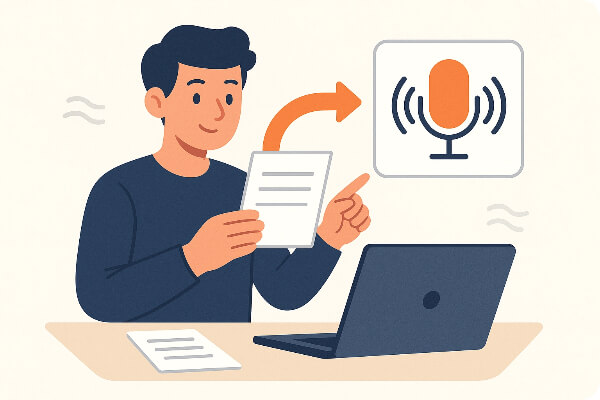
How To Turn Notes Into A Podcast With AIPodify
Have you ever taken valuable notes during work, study sessions, or meetings that you wished more people could see and learn from? In recent years, podcasts have become one of the most popular ways to share ideas and reach new audiences. So why not turn your notes into a podcast?
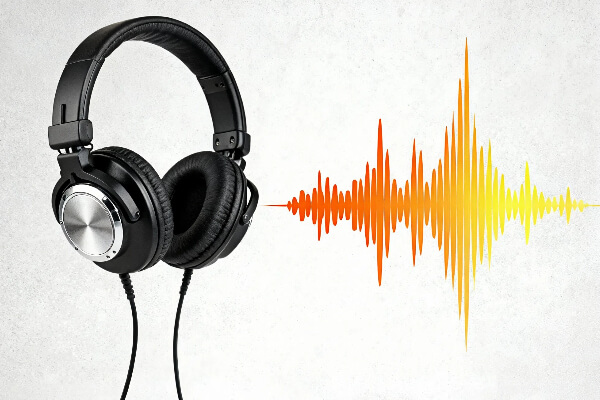
The Ultimate Guide: 30 Practical Methods to Promoting Your Podcast
This guide provides a complete framework to build your audience—from establishing a content foundation to executing multi-channel promotion—transforming your podcast from one that is simply heard to one that is actively anticipated.